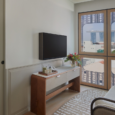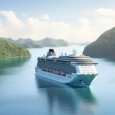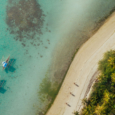In the Philippines, adventure hikers are spoilt for choice when it comes to mountain trails. With over seven thousand islands, our country is not at all lacking in ranges, jungles, and peaks. It is only a matter of time until one hikes up Mount Apo, our highest at just shy of 3,000 meters above sea level.
The Hike Up Malaysia’s Highest
A summit of Apo triggers a natural next question: What’s next? For us Filipino adventure hikers, the easy, convenient, and sensible answer would and should be Malaysia’s Mount Kinabalu.
SEE GALLERY BELOW FOR PICTURES.
Mount Kinabalu Adventure
Mount Kinabalu is located in East Malaysia, in the state of Sabah. Due to its proximity to the Philippines, the cultural makeup of Sabah residents are not too far off ours, and more than once can one hear Filipino being spoken!
Day 1: The Trip to Kinabalu National Park
The trip to Mount Kinabalu began with a direct flight from Manila to Kota Kinabalu, the capital of the East Malaysian state, followed immediately by a private vehicle transfer to the UNESCO World Heritage Site Kinabalu National Park. We stayed the night at this beautiful and rather chilly park, already at an elevation just under 2,000 meters above sea level.
The hotel rooms in the park are amazing. Trail Adventours secured luxurious private chalets for all the participants, and we were all pleasantly surprised to know that this was included in our adventure package. We slept early, and enjoyed the beds as much as we can.
Day 2: The Hike to Laban Rata
Our Trail Adventours team leader, Guido Sarreal, then gathered our team of twenty-six early the next morning to begin a long and steep hike up to Laban Rata, the rest house for hikers to get acclimatized before a summit assault. A quick morning briefing with our local guides ensued, and off we went!
We soon split into three pace groups: a small, fast group in front led by my friend and Trail Adventours guide Jeric Tugaff, the middle-of-the-pack group where most of the hikers stayed led by Guido Sarreal, and the sweeper group led by experienced adventure guide Eugene Terana.
As part of the lead group, I personally had a tough time with the hike. It was my first crack at high altitude hiking, and from 2,700 meters above sea level, I alerted team leader Jeric of a nagging pressure behind my eyeballs and a light headache. These were sure signs of acute mountain sickness, AMS. Also known as “altitude sickness”, I never understood how much it affects hikers until I experienced it!
The usual pace I had was nowhere to be found and our team – thankfully – slowed it down somewhat.
Along the trail, we enjoyed plenty of tree cover. We were, after all, trekking through some of the most carefully protected jungles in Southeast Asia. Rest stops were located every kilometer or so, which we used for snack breaks and acclimatization. As expected, we were also caught in a heavy downpour.
The 3,000 meters above sea level marker was a sight to behold, often signifying a Filipino hiker’s “going above Mount Apo”. The trails from this point on exchanged thick, humid jungle for bonsai-like forests and shrubby growth, perhaps a testament to the changing conditions as altitude increases.
We also passed by signs of scarred earth – reminding us of the painful and tragic events of June 2015, a year ago, when an earthquake struck Sabah and the ensuing collapse of trails and mountainsides claimed the lives of fellow adventure hikers and guides alike. We paused for a moment along one such earthquake remnant and held our silence in reverence to the mountain and the lives lost.
We eventually reached Laban Rata shortly after 1500H, well within the cut-off time of 1600H. Should hikers not reach the rest house by four o’clock, the park has instituted an extra RM15.00 per hour per guide per hiker fee, as a way to ensure hikers do not take too much time along the trails, and head to the safety of Laban Rata as soon as possible.
Laban Rata is a big rest house, styled in the manner of dormitory mountain huts. The mountain’s carrying capacity is dictated by how many occupants the rest house can take which was a brilliant conservation and safety move, in my opinion. For that reason, there was only about 180 of us who are sure to make a summit attempt the next morning.
Dinner was served early, at 5pm, and by 730pm, most of us were in our beds, in preparation for a cold, wet, and trying tomorrow.




